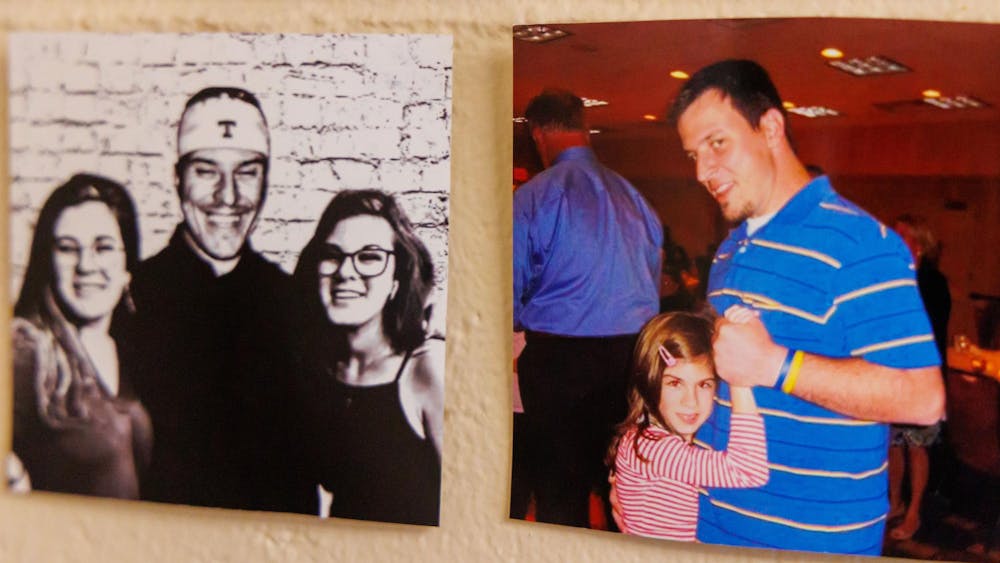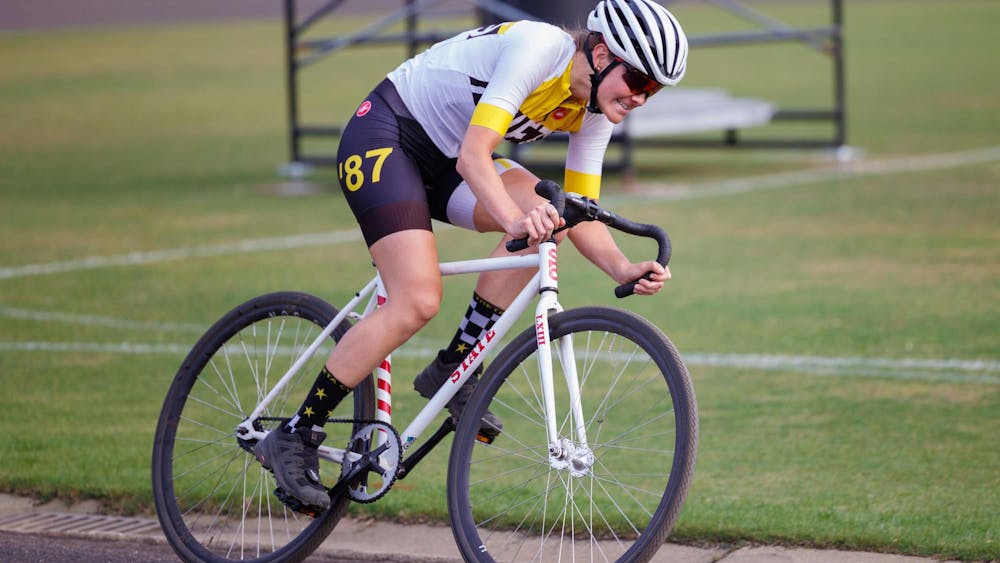Fifteen students stare glumly ahead at people who already have dibs on a work station in the fifth-floor computer lab of the Main Library. Some tap their feet or shift their weight, while others talk on their cell phones to maintain some semblance of a social life as they begin to glare at the people who constantly move but never leave. \nThe elevator behind them dings as five more bodies emerge with the hope of getting a computer, only to find themselves at the back of a line that is not going to move because there is no time limit on group computer labs.\nWith 11 days to finish an 80- to 150-page executive summary on BioChem4000 blood monitors, I-Core groups have been camped out in computer labs across campus for six to 16 hours a day doing qualitative and quantitative analyses. While some call Integrated-Core the "rite of passage" into the Kelley School of Business, others call it hell. On the way out of a consulting session with one of the four I-Core professors, a male student described it as "running backwards through a cornfield with no pants."\nAll undergraduate business students are required to take I-Core, a 12-credit hour package that includes classes in marketing, finance, strategic management and operations management. At the end of the semester, students are required to produce a case study worth 25 percent of their grade that integrates all four aspects of the classes they took.\n"They're literally eating, drinking and sleeping I-Core 24 hours a day," said Daniel Greiner, finance professor and I-Core coordinator. "Of course they're going to be a little bit ragged around the edges."\nTo ease the pain, many students comfort themselves with caffeine and snacks. The computer lab of the Main Library is littered with cellophane wrappers, Nalgene water bottles, packs of gum, 20 oz. soda bottles and styrofoam coffee cups that sit precariously close to group members' paperwork and laptops. \nWith sunflower seeds as sustenance, senior Johanna Miller has already been working with her group several hours before they decide to take a break at 5:30 p.m. \n"I'm never home," Miller said. "My roommates have hardly seen me. When I go home for dinner, they'll come downstairs to watch me eat."\nSchedules have remained hectic since April 21, as business students try to get the final and most challenging hurdle of I-Core done by Thursday: the case study.
The Four-Decade Tradition\nThe I-Core program has been around for almost 40 years and is a major tool for recruitment and assisting business students in choosing their concentration, said Joanne Namy, director of Certification in the Undergraduate Program.\nMost business students take I-Core in the fall of their junior year after they have passed 15 prerequisite business courses with a "C" or better. Last fall, 750 students took it, while 350 are enrolled in it this spring and 250 more will take it this summer.\n"People complain bitterly about (the case study) because it's so intense and requires them to bring together skills they haven't applied together before, but pulling the pieces together is what allows them to see the big picture for the first time," Namy said.\nSix people are assigned to each group, and this is the first year professors have used a "blind system" (no names) to create teams with a balance of exam grades and areas of interest. Their objective is to write an executive summary to "upper management" describing a new product, providing an analysis, demonstrating a conceptual understanding and applying all four aspects of I-Core. \nProfessors hold consulting sessions when representatives of each group can ask questions, but the sessions only serve to guide students in the right direction -- not to give them the answers.\n"No one's going to hold their hand -- they have to make things work out," Greiner said. "Fifty percent of the case study is about learning to work in an unstructured environment in a team."
'Crazy' at Kinko's\nJunior Edward Reynolds, on autopilot after two-and-a-half hours of sleep, said procrastination is not an option during this project. Because all of the project's four sections are integrated, each group depends on its members to get their sections turned in on time. \n"Lateness is strictly not allowed, but we've never had a case study turned in late," Greiner said. "Students are forced to plan ahead."\nKinko's, 2650 E. 3rd St., also plans accordingly by staying open 24 hours Monday through Wednesday to accommodate the I-Core rush. \nManager James Clark said Tuesday and Wednesday nights are when it starts to get "crazy," with anywhere from 20 to 40 students in at a time. Students usually don't interfere with other customers because they come in late at night until early morning.\n"No one else will stay open for them," Clark said. "Sometimes they go to Kinko's in Indianapolis because it's busy here, but we've never missed a deadline for them." \nThe cost of each bound summary varies based on color and format, but Clark said the cost runs about $60 to $90 per group. Last-minute changes at one of the six computer stations cost 20 cents per minute, which can raise the total cost even more. While some have taken their frustrations out on Kinko's employees, Clark said they don't let it affect them because they know the students are under pressure.\n"A few have not calmed down and they were asked to leave, but typically that does not happen," Clark said. "We let them do what they need to do so they can be relaxed."\nWhen problems arise among group members, professors advise them to think of the case study as a work situation.\n"They can't change matters, so they have to try and make the group as productive as possible," Greiner said. "They need to confront the person professionally and get the best work out of them."
Real-World Benefits of I-Core\nJunior Sagar Desai and senior Vincent William said work ethic and recognizing the strengths and\nweaknesses of each group member are crucial to producing a good case study. While fellow group member Kyle Thompson, a junior, rolled and unrolled a copy of their executive summary in his hands, the group members discussed how to fix a mistake they made in one of their formulas.\nDesai digressed only long enough to jokingly lament that their group was all male, and to point out they should've chosen to be education majors because of the 80-to-20 female-to-male ratio in the School of Education.\nTheir group and several others were hesitant to openly discuss the details of their cases because collaborating between groups is prohibited. Sharing information could jeopardize the originality -- and\ngrade -- of a group's project. Thompson said the case study has enough variables that each group can interpret them in a unique way.\nThis year there is even more at stake because Ford Motor Company is sponsoring an award for the top case study -- $1,200 to be split among the group members.\nThe top 10 percent of groups receive an "A-" or an "A," while the lowest grades run around a "C-." The average grade being about 81 percent, Greiner said.\nThe four I-Core professors grade the professionalism of each of the 43 cases, while Ph.D. students use a grading key on each of the case's sections, so they can get the studies done within five days after they are turned in. Peer evaluations are figured in as well. \nBoth professors and I-Core survivors said it's difficult to realize and appreciate the educational rewards of such an experience until after it's over. Greiner said many students have contacted him over the years to tell him how much easier their jobs or internships were after going through I-Core.\nThe general consensus from groups currently working on case studies was that while I-Core might be difficult now, they've already learned more and are applying their skills instead of just regurgitating information.\n"It pushes you outside your comfort zone and makes you apply things you may have only learned once before," Reynolds said. "You keep hitting walls and challenges and you have to work at it until it makes sense"





